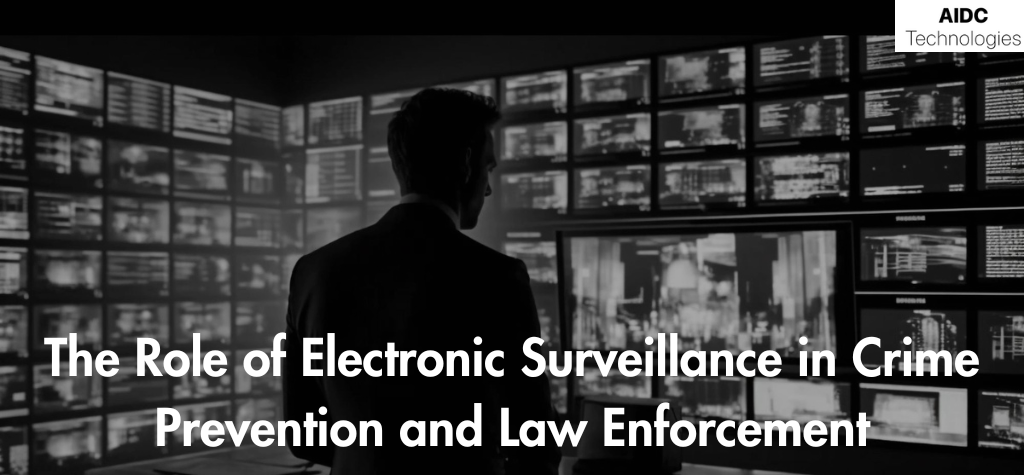
In today’s digital age, electronic surveillance plays a pivotal role in crime prevention and law enforcement. This article delves into the various aspects of electronic surveillance and its significance in maintaining public safety and security.
Understanding Electronic Article Surveillance
Electronic article surveillance involves the use of technological tools and systems to monitor and collect information about individuals or groups. It encompasses a wide range of techniques, including video surveillance, GPS tracking, electronic communications monitoring, and data analysis.
Types of Electronic Surveillance
Video Surveillance:
Utilizes cameras to monitor public spaces, streets, buildings, and other areas for suspicious activities.
GPS Tracking:
Tracks the location of vehicles or individuals in real time using GPS-enabled devices.
Electronic Communications Monitoring:
It involves intercepting and analyzing electronic communications such as emails, phone calls, and text messages.
Data Analysis:
Utilizes advanced algorithms to analyze large volumes of data for patterns and anomalies.
The Significance of Electronic Surveillance in Crime Prevention
Electronic article surveillance plays a crucial role in preventing various types of crimes, including:
Theft and Burglary
Video surveillance cameras deter potential thieves and burglars from targeting homes, businesses, and public spaces.
GPS tracking systems enable law enforcement agencies to recover stolen vehicles and apprehend perpetrators.
Violent Crimes
Video surveillance in high-crime areas helps identify and apprehend individuals involved in violent crimes such as assault and robbery.
Electronic communications monitoring can uncover plans for criminal activities, enabling preemptive action by law enforcement.
Terrorism
Advanced electronic surveillance techniques help detect and prevent terrorist activities by monitoring suspicious communications and movements.
Data analysis tools can identify patterns indicative of terrorist planning and coordination.
The Role of Electronic Surveillance in Law Enforcement
Electronic surveillance provides law enforcement agencies with valuable tools and resources to:
Gather Evidence
Video surveillance footage serves as crucial evidence in criminal investigations and court proceedings.
Electronic communications monitoring helps law enforcement gather evidence of criminal activity, including drug trafficking and organized crime.
Track Criminals
GPS tracking systems enable law enforcement to track the movements of suspects and fugitives, leading to their apprehension.
Electronic article surveillance data can help establish timelines and reconstruct events related to criminal activities.
Prevent Crimes
Surveillance cameras act as a deterrent, discouraging individuals from engaging in criminal behaviour.
Timely intervention based on surveillance data can prevent crimes from occurring or escalating.
FAQs (Frequently Asked Questions)
Q: Is electronic article surveillance legal?
A: Yes, electronic surveillance is subject to strict legal regulations and oversight to ensure compliance with privacy laws and constitutional rights.
Q: How does electronic surveillance protect individual privacy?
A: Electronic article surveillance is conducted within legal boundaries, with measures in place to safeguard individual privacy rights and prevent unauthorized access to personal information.
Q: Can electronic surveillance be used as evidence in court?
A: Yes, electronic article surveillance evidence, such as video footage and communications data, can be admissible in court proceedings, provided it meets legal standards for relevance and authenticity.
Q: What are the ethical implications of electronic surveillance?
A: The ethical implications of electronic article surveillance include concerns about privacy invasion, potential misuse of surveillance data, and the impact on civil liberties.
Q: How effective is electronic article surveillance in preventing crime?
A: Electronic surveillance effectively deters and prevents various types of crimes, particularly when combined with other law enforcement strategies.
Q: What measures are in place to ensure the accountability of electronic surveillance practices?
A: Legal frameworks, oversight mechanisms, and accountability measures are established to regulate electronic surveillance activities and ensure transparency and accountability.
Electronic surveillance plays a vital role in crime prevention and law enforcement, offering valuable tools and resources to maintain public safety and security. By leveraging technological advancements responsibly and ethically, we can harness the power of electronic article surveillance to create safer communities and uphold the rule of law.